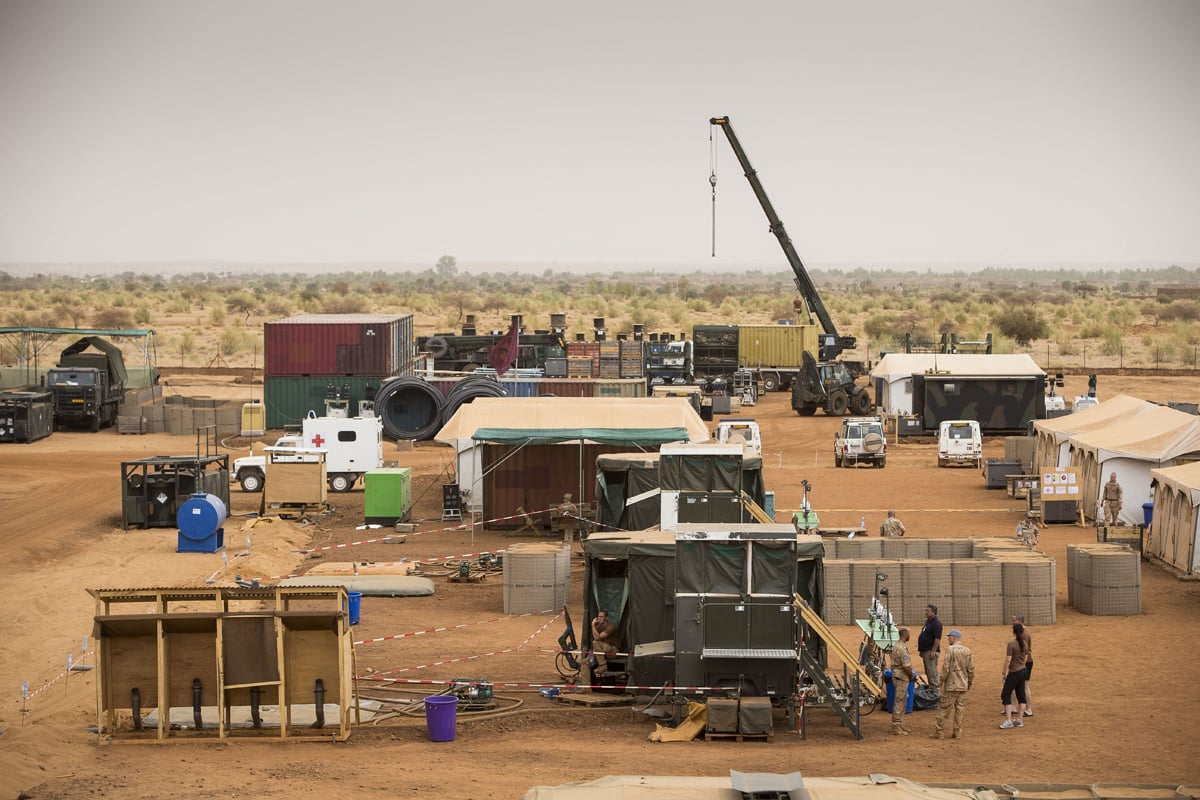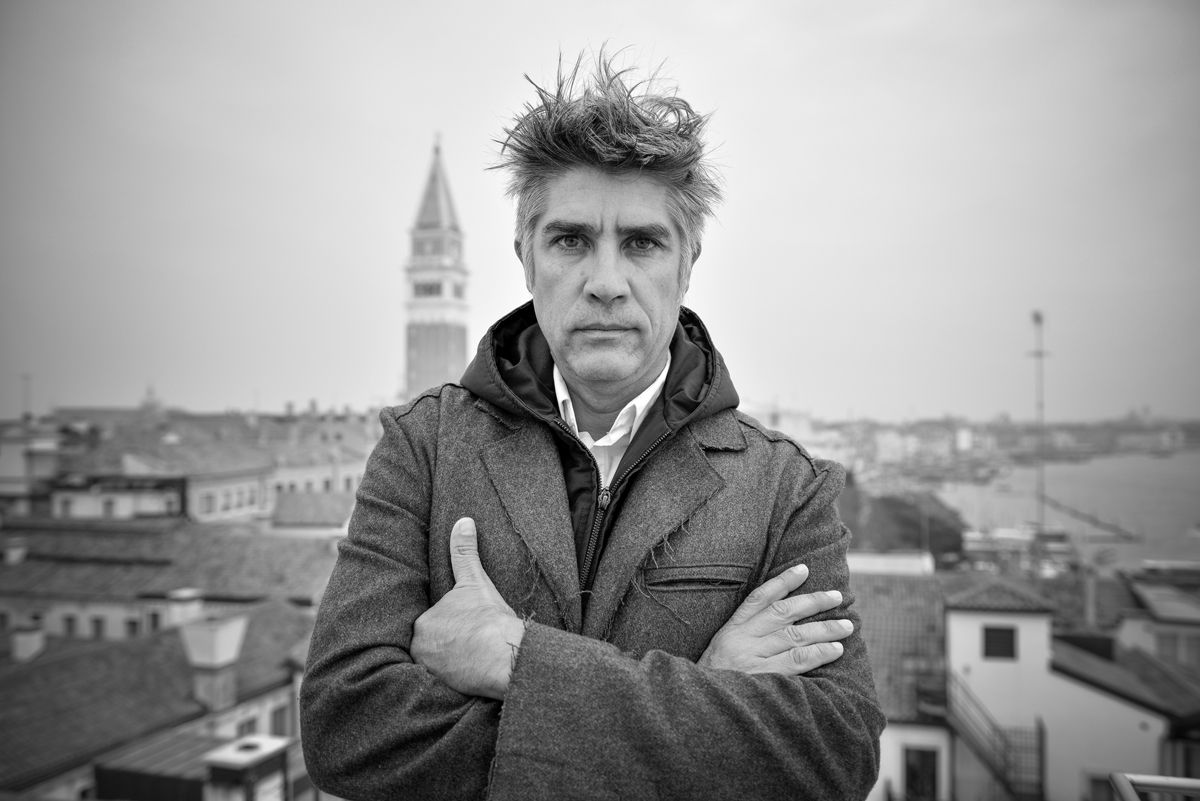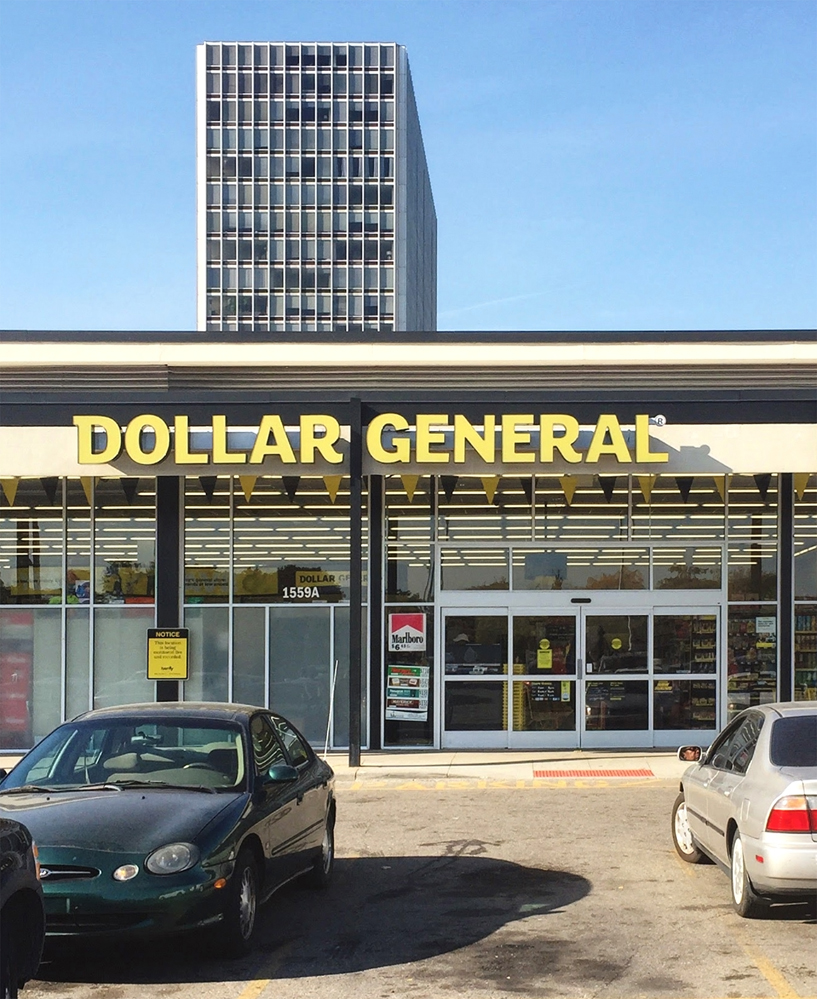
March 17, 2016
Q&A: Alejandro Aravena on Architectural Reportage, Regionalism, and the Future of Cities
The director of this summer’s Venice Architecture Biennale discusses the impact architects can have at the global and local levels.

Architect and curator of the Dutch pavilion Malkit Shoshan has responded to Alejandro Aravena’s call for the 2016 Venice Architecture Biennale with a project to overhaul the design of UN bases around the world.
Courtesy © Dutch Ministry of Defence
Chilean architect Alejandro Aravena is best known for social-housing projects in his native country, in which residents are given a half-completed home that they can finish according to their desires and means. Aravena’s approach is widely celebrated (the houses were surely a big part of his Pritzker Prize win this year), and his interpretation of the social-housing typology helped kick off the social-design movement of the past decade. So it stands to reason that he would bring this same sensibility to the Venice Architecture Biennale, whose theme, Reporting from the Front, he selected as director. Aravena spoke to Metropolis editors Samuel Medina and Avinash Rajagopal about the meaning of “the front,” the importance of making localized proposals, and the Biennale’s potential contribution to the UN Habitat III conference happening this fall.
Avinash Rajagopal: You have been involved with the Biennale a couple of times before this, as a participant. Are there any lessons you learned that informed your approach to the current Biennale?
Alejandro Aravena: Yes and no. Yes in the sense that I remember that the amount of information that is gathered in one single space makes it impossible for you to assume that you will always have a visitor’s attention. I was looking for different time layers for each presentation so that a person walking through the exhibitions and looking randomly at titles will be able to collect ideas and know phrases and clues that they then bring back home. What I didn’t grasp was the global reach of this institution. At the beginning I was worried about trying to add my personal contribution, but I realized that even in the most remote place in the world, the Biennale was already important. There was no need to add anything. I could just concentrate on the core of the Biennale, and this allowed me to focus my energy on allowing others to provide the knowledge—going back to the basics in a way, so that the most people possible can get knowledge from that.
Samuel Medina: By the basics, do you mean the exhibition brief and the elements that fall underneath it?
AA: The Biennale is about a certain content and showing it in such a way that you go home with more knowledge than what you had when you entered. Before going into any solutions, you have to try to understand what the question is. In the ’60s, when everybody was saying that technology was going to be the answer, [British architect] Cedric Price asked, “What is the question?” I wanted, first of all, to make a survey of challenges and potential threats that we should not forget—from pollution and natural disasters to inequality. I’m not worried if this list is not perfect or if it is too little. I filtered those threats through the built environment as a way to tackle them and by identifying who’s working on these issues. Second, projects. Having served on the Pritzker Prize [jury] was very important because one of the conditions of the prize is that you have to visit the work of potential candidates. I wanted to know the story behind a project—all the forces at play, the constraints, the procedures that were required for its realization. It is not just about the outcome but what it takes to do a proposal. The third part was the practitioners, and by that I mean people who I know have been consistently capable of doing quality work. Out of those three entry points, we got a very big list of projects that we are beginning to narrow down. And in addition to that, we received spontaneous submissions—a lot of them.
SM: And where does research—a major component of the last Biennale—fall into this?
AA: I wasn’t interested in research, to tell the truth—at least, research in the classic sense that there is a subject that we will study, so I’m going to articulate a phenomenon. Fine. That’s a necessary condition, but it is not enough. What do you do with that? What is your proposal? If it’s not a proposal, then this Biennale is not the place.

Aravena’s brief for the Biennale asks architects from all over the world to formulate proposals to solve regional problems.
Courtesy Andrea Avezzù
AR: In your statement, you talk of the front in an almost militaristic way—so do you see these problems as battles that architects need to fight?
AA: Yes. These are battles that we as citizens should fight. The way we enter these shared battles is through design. The question of pollution is not an architect’s battle. The tension of a space, or the continuity of the floor with the ceiling as a consequence of the new tools that we have—that’s an architect’s problem. Who else other than an architect would care about the tension of a space? Pollution is something that we all share. The problem is not specific, but the way I enter the conversation is through a specific knowledge of architecture. But as soon as I do something with that, that proposal is brought back to society to be judged according to nonarchitectural rules. Is my life better or not after what you did?
AR: With architecture projects that are engaged with the larger problems of society, very often people are criticized about not talking enough about impact. How does the notion of impact play into your conception of the work the Biennale is showcasing?
AA: Every major enterprise begins with one step at a time. I think we—as a profession, as a discipline—are really far away from impact. On the more artistic and cultural end of the spectrum of architecture, the value proposition is to do something as original as possible. The attitude is “Never before, never again.” In 2000, when I began to work toward social housing, I didn’t know what a subsidy was. It was one of those moments when you’re embarrassed about your own ignorance. But if you’re rigorous despite your ignorance, you ask those stupid questions that allow you to move forward. Eventually I was able to identify the shortcut toward knowledge, let’s say. At that end of the spectrum, the value proposition is exactly the opposite. In public policy, the more anchored you are in the society, the better. The way you describe your value proposition is not by saying, “This has not been done before.” You attempt to say exactly the opposite: “This has been attempted here and here and there and there.” If there are many people trying to do something, it may mean that that work is relevant to a society. Your outcome should be as replicable and repeatable as possible. The difficulty of what we have in front of us is that architecture should not have to choose one or the other; it should be able to create something that is simultaneously at both ends. It happens very rarely, but it happens—those moments where architecture is both about impact and uniqueness, about being anchored and being original. It’s about responding to circumstances and yet not being the sole consequence of those circumstances.

The British Pavilion’s cheekily titled Home Economics exhibition will incorporate full-scale sets depicting possible future domestic arrangements. Curators Shumi Bose, Jack Self, and Finn Williams have tapped London graphic designers OK-RM to provide the project’s visual identity.
Courtesy OK-RM and Matthieu Lavanchy
SM: You are arguing that quality is a fundamental human right. What role do architects have to play in securing that right?
AA: One of the few global agreements that we have is that we do have a problem of inequality. All social conflicts and friction and political threats tend to come not so much from poverty but from inequality. If you look at numbers in terms of the global development of the planet, fewer people now die from […] not having access to water, to sewage, to electricity. Income has gone up. We’ve been actually improving along that line. But inequality has been worsening. We are less poor, but more unequal. How to correct this inequality? Mainly one thing—income redistribution. The assumption is you’re poor, so you can’t provide yourself with enough quality of life. You are living in a slum or squatting. You are far away in the peripheries. In order to go to work, you have to travel three hours a day. The assumption is that if you have more income, then eventually instead of living three hours away, you may buy a flat that is closer to your job. Instead of having to use a very bad public transportation system, you buy a car. But that [kind of change] takes a couple of generations at least.
What we have seen is that the city is a shortcut toward equality. You can, by identifying strategic projects in the city, improve the quality of life for people without having to wait for income redistribution. For example, in the same three-hour commute, which is where you can afford to live, with the same salary that you have today, imagine the radical change in quality of life if you can sit on the bus you take to work, instead of being crushed in a crowd, standing for two hours. Sitting on a bus. You may even sleep on that bus or read. If you create a state-of-the-art transportation system, those two or three hours spent have a better quality. Of course that costs money—but much less than what it would cost to try to change the structure of the city.
Another example—public space. In a country that is not the poorest in the world, like Chile, in a city that is not the most dangerous one in the world, Santiago, with six million people, three million people do not make enough to have holidays. They don’t have money to go on vacation. The only opportunity they have to spend a moment of relaxing or being with their children is the public space. Cities are measured for what you can do in them for free.
AR: There’s a special project at the Biennale that has to do with Habitat III [a United Nations conference on housing and sustainable urban development last held in 1996], coming up in October. Do you feel that the Biennale has a message to give to the UN?
AA: I think it’s a two-way conversation. The UN is perhaps the institution that is in the most privileged position to understand what the challenges are that we should be taking care of. Two representatives from the UN reviewed the list [of pressing issues concerning humanity’s continued existence] that I made for the Biennale. They said ninety-five percent of the themes that they will be discussing in Quito, Ecuador, [the site of Habitat III], are on that list. I thought that I would like to know what the other five percent is. [I told them] “Bring it to me. I may not know. I may be missing something important.” We, the architectural community, we should get in on the problems, the questions that will be addressed at Habitat III. I think one of the most powerful ways to change our situation is deciding, once we have agreed on the problems, what we do with that. By definition, architecture has the capacity of synthesizing. This Biennale is about examples and lessons. [We are asking architects to] show how you translate those things into a proposal. The exemplary way is so much more powerful than a report of good intentions. I would say that in the case of the UN, I would like to see that the collection of proposals we have could work in this exemplary way so that the abstract discussion about general theoretical principles is brought down to earth and translated in a very concrete way. That’s why it’s a two-way conversation.

Curated by Cynthia Davidson and Monica Ponce de Leon, the U.S. Pavilion will explore architecture’s capacity to reshape Detroit’s urban fabric. Erik Herrmann’s “Dollar General at Lafayette Park” is one of 20 postcards that form the “My Detroit” series, a photographic component to the pavilion exhibition.
Courtesy © Erik Herrmann
Recent Viewpoints
Viewpoints
Navigating the Path to Net Zero





